The Ultimate Guide to Multicam Setup in 2025
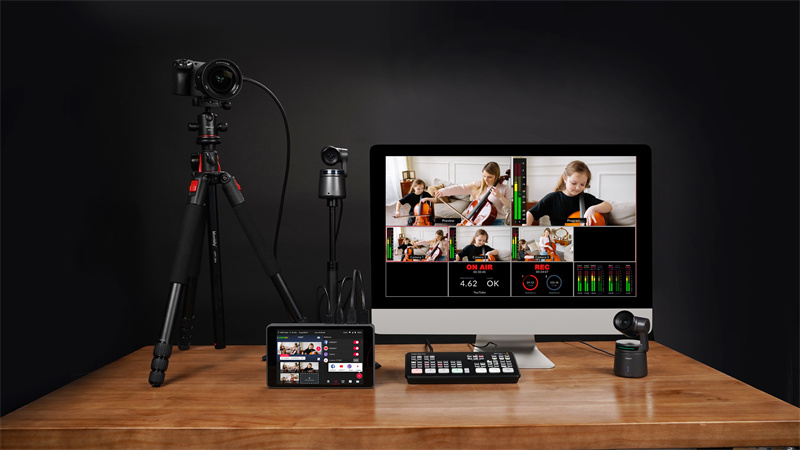
If you're struggling to capture the full scope of your scene with just one camera and craving that professional feel in your videos, a multicam setup is your answer. Multicam setup can help you capture a brand's performance from multiple angles, showcase a product demonstration with close-up details, create dynamic interview segments with smooth cuts, and whatnot.
Not sure how to do it? This article will delve into the essential equipment you'll need, including innovative options, a step-by-step setup process, and the benefits of using multiple cameras. So, get ready to create captivating content that stands out from the crowd.
Essential Equipment for Multicam Setup
Here is the gear that will bring your vision to life, including a range of options that you can choose from.
1. Cameras
To build a multicam setup, you will need at least two cameras, one would be your main camera and another would be your secondary camera. For your main camera, building off of what you currently have is usually the best course of action. As a general rule, your cameras should match. You will, at the very least, require a second camera with sufficient controls to assist you in matching your shots. When we say 'match', we mean that the brightness and colors should appear the same. Next, you should consider the location and arrangement of the camera. To secure your camera, you might need a tripod or a clamp of some sort.
Main Camera Recommendation: Sony BRC-H800
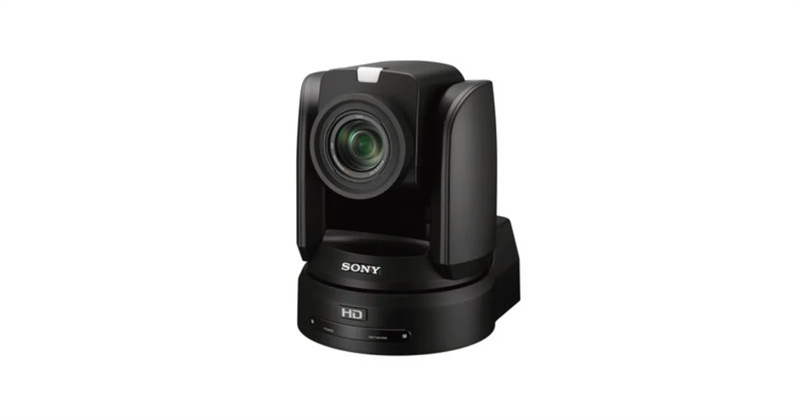
The flexibility of 3G-SDI and HDMI connections are combined with unmatched broadcast picture quality and silent, smooth PTZ operation in the BRC-H800 remote camera. This small yet powerful robotic camera is made for unsupervised use and works well in conjunction with other broadcast cameras to take pictures in awkward or difficult-to-reach places. Dual tally lighting for on-air operation is among the broadcast-friendly features. Choices for ceiling, tabletop, or tripod mounting provide increased operational flexibility. Together with support for PoE+ and Genlock, a wide selection of video interfaces and remote control options are also available to provide seamless integration into any broadcast, professional, or corporate AV system.
Secondary Camera Recommendation: OBSBOT Tail Air
It is a 4K PTZ camera with AI capabilities, which is intended for individuals who prefer a more polished appearance. The device offers content makers a lot, including automatic subject tracking, NDI connectivity, and the capacity to record 4K video at up to 30 frames per second. There is a maximum 4X digital zoom on the Tail Air. The digital zoom of the camera is enhanced by its AI subject-tracking toolkit. When tracking is activated, the Tail Air will automatically tilt, pan, and zoom in order to track the selected object. It is simpler to choose between automatically-framed photos and manually-framed shots with the AI-powered Director Grids shot picker. You can switch between the up to nine shot options that the tool displays as if they were different camera feeds.
Key Features:
- Advanced AI Auto Tracking
- UHD Resolutions up to 4K@30fps / 1080P@60fps
- Seamless NDI Connectivity
- Multi-port Connections
- Exclusive App Support
2. All-in-one Multicam Streaming Studio: OBSBOT Talent
Next, you would need a video livestream production tool. One option is OBSBOT Talent, a multifunctional tool that combines an encoder, switcher, recorder, monitor, and controller into a single device. The exclusive features help you control the PTZ gimbal, making your multi-camera live streaming more professional and efficient. This tool has versatile connectivity and streaming capabilities, such as the power to incorporate additional video sources, capture instance replays, auto-switch between multiple video sources, etc.
Some other features of this tool are adaptive screen rotation, reliable power for uninterrupted streaming, tally light support, a built-in cooling fan, and great portability and mobility.
3. Audio Equipment
While captivating visuals are key, you must not underestimate the power of professional-sounding audio in your multicam production. For crisp dialogue and clear narration, consider Lavalier mics or shotgun mics for capturing focused audio in specific areas. Next, for ultimate audio control, you can use an external recorder to record high-quality, separate audio tracks for each camera. With multiple cameras, an audio mixer becomes your audio hub. It allows you to adjust levels, add effects, and combine audio sources from your microphones and camera for a cohesive soundscape.
Lavalier Mic Recommendation: Rode Wireless Go II
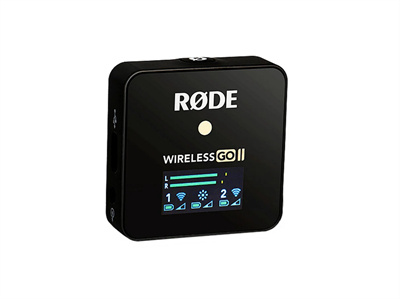
The Rode Wireless GO II is a superb compact professional wireless system that has an onboard recorder, two transmitters, and a 3.5mm output. Although there are built-in microphones on transmitters and body packs to get you started, plug-in Lavalier microphones are typically used. Sennheiser microphones and any standard 3.5mm are compatible. The Rode app allows users to access additional functions and settings of the Wireless GO II, like the safety channel. Additionally, it has USB connectivity, allowing you to download your recordings fast.
Audio Mixer Recommendation: GoXLR Audio Mixer
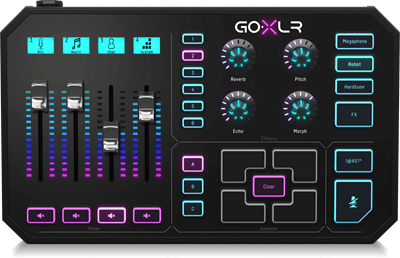
TC Helicon's GoXLR is an excellent audio mixer with high-end features. It contains a soundboard, four channels, and numerous vocal effects, it was created specifically for live broadcasters. A useful tool for any live broadcaster, the "Cough" feature on this small and light device allows you to rapidly mute yourself. Additionally, you receive controls for EQ, compression, gating, and de-pressing (destabilizing) for flawless-sounding broadcasts. Although it is priced on the higher end of the audio mixer range, this is a very user-friendly gadget that can be used for smooth audio mixing and control.
4. Cables and Accessories
Along with the above equipment, there are certain cables and accessories that you should keep handy when setting up your MultiCam. To ensure a seamless workflow, you will need camera cables, power cables and adapters, tripods, and mounts, extra batteries, and signal boosters.
5. Multicam Streaming Software
Without your multi-camera live streaming software, it would be very challenging to do a multicam stream. You may send all of your angles to your Live feed by using it to remotely link all of your devices. If you're unsure about the multicam streaming software to select, think about important characteristics like device compatibility and portability when you compare prices. To make live streaming even simpler, you might also want to select software that enables visual additions like logos and images and supports inviting people from a distance.
Streaming Software Recommendation: VidBlasterX
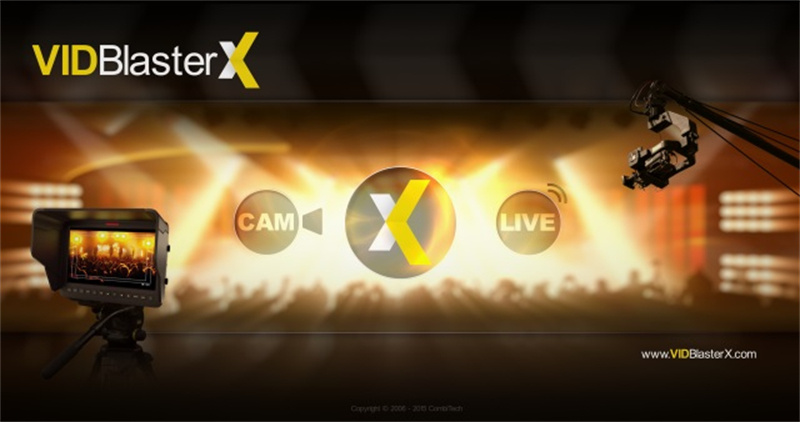
It is an amazing software that boasts tools for multicam streaming. It has a camera module that supports multiple cameras. To flip between many cameras, the monitor can accommodate more than one camera module. For Windows users, VidBlasterX is a good multicam streaming program. Expert broadcasters find VidBlasterX appealing because of its distinctive modular design, which allows for extreme customization and expansion.
Things Need to be Considered When Creating a Multicam Setup
- Detailed Planning: Careful pre-production planning is necessary. Describe every element of the shoot, including the movements, angles , and locations of the cameras. Make a thorough shot list and storyboard to make sure all the perspectives and scenarios that are required are effectively recorded.
- Consistent Settings: To ensure uniformity throughout the footage, make sure all cameras are set to the same resolution, frame rate, and white balance. This ascertains a consistent appearance in the finished result and streamlines the editing process.
- Communication: Effective communication is crucial for all teams. Regarding the filming schedule, directors, lighting technicians, camera operators, and performers must all be in agreement. Misunderstandings and delays can be avoided with frequent briefings and a common understanding of the objectives and timetable.
- Flexibility: Unexpected difficulties and changes will inevitably occur, even with meticulous planning. Let some room to maneuver for these problems without sacrificing the quality of the final result.
- Camera Positioning: Arrange cameras in a way that provides coverage from different viewpoints and angles. Take into account close-up, mid-, and broad shots to produce a final piece that is captivating and energetic. Make sure that no camera obstructs another's vision.
- Lighting Consistency: To prevent shadows and uneven exposure, make sure there is consistent lighting from all camera angles. To keep the same style, stick to the same lighting configuration or make changes as necessary.
- Stable Mounts: To avoid unsteady footage, secure all cameras with sturdy tripods or mounts. If needed, use gimbals or dollies to get dynamic, fluid shots.
- Audio Synchronization: To guarantee excellent sound, use a central audio system or external audio recorders. Using clapperboards or timecodes, sync video, and audio to expedite post-production.
- Efficiency Tools: Make use of programs and equipment to improve multicam production efficiency. By streamlining shot tracking, scheduling, and footage management, these solutions can minimize errors and save time.
- Test Setup: Prior to the actual shot, thoroughly test the complete multicam setup. This makes it easier to find and fix any technical problems, guaranteeing a flawless production day on the shoot.
The Benefits of Multicam Setup
Here's why multicam setup is helpful:
- An improved experience for viewers: Instead of depending just on one camera and shooting statically from one perspective, the MultiCam setup produces far more interesting and entertaining viewing. Having multiple camera angles lets you transition between a broad view and a close-up, which breaks up a scene and gives your narrative more dimension.
- Reduce the risks: While a filmmaker working on a drama to a fictitious show can reshoot a scene until it's just right, recording events in real-time means you aren't able to go back and capture any moments you missed the first time around. You may be sure that one camera can capture what another misses by using many cameras when shooting.
- Greater latitude for creativity: More freedom to respond and record the unscripted nature of a moment such as a contentious exchange between reality show contestants or actors performing a scene, is provided by MultiCam filming.
- Editing flexibility: Editors have additional possibilities when developing a story when there are multiple perspectives available. It offers writers the freedom to tell the story the show's producers believe will provide the most entertainment value for viewers and enables them to piece together a scene in a cohesive and artistic manner.
FAQs About Multicam Setup
1. What is a Multicam Setup?
Multicam setup is exactly what it sounds like - Multiple Cameras. This indicates that a video production alternates between two or more cameras or video streams as it is being produced. A static, immovable stream from a single camera would not be as engaging to viewers as modern feeds, which frequently have various camera perspectives or graphical information.
2. What is the Difference Between Single Cam and Multicam?
The main differences are the way it is filmed and the editing options available. Multi-camera setups are commonly employed in variety shows, talk shows, and sitcoms that are recorded live in order to capture various viewpoints at once without having to move the cameras. Dramas and high-caliber comedies are the main genres for single-camera films, which strive for a more cinematic look and take longer to set up various camera configurations for different shots. Because there is less film to edit, single-cam videos can be edited more quickly than multicam setups, which provides editors with more variety and footage to work with in post-production.
3. What are the Disadvantages of Multicam Production?
Here are some downsides of multi-camera production:
- Increased Costs: A multicam setup calls for a number of cameras, operators, and pieces of equipment, which can add up quickly.
- Complex Setup: It can be difficult and time-consuming to set up several cameras, guarantee constant illumination, and coordinate angles.
- Restricted Flexibility: After cameras are positioned, they are frequently fixed, which restricts the creative compositions and motions of shots.
- Space Requirements: Multiple cameras, tripods, and operators require more physical room for multi-cam setups, which can be a problem in smaller spaces.
- Editing Challenges: While having more video adds diversity, it can also make editing more difficult and time-consuming.
Conclusion
Multicam setup can be a great idea for webcasting live streams. With this article, you can now set yourself up with several cameras easily. However, you'd need great software as your main equipment in a multicam setup. You need a high-end platform with the technical capabilities and support you need to get started.















